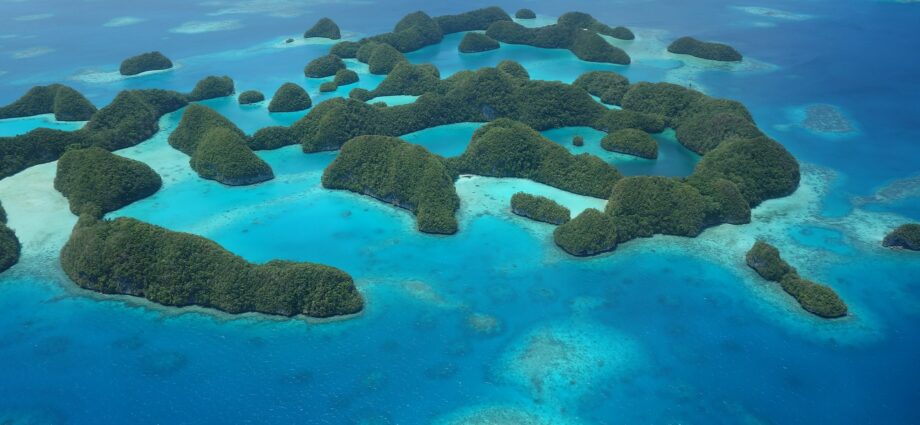
by James Ellsmoor – CEO of Island Innovation
June 18, 2024
From the Pacific to the Caribbean, there is a palpable shift in the air as both regions forge new sustainable development trajectories. The end of the 4th International Conference on Small Island Developing States (SIDS4) last month saw the world’s islands take stock of their development and agree on the frameworks for the next ten years of policy.
The once-in-a-decade conference, this time held in Antigua and Barbuda, was a showcase of expertise, resilience, and innovation in action. It highlighted that despite the complex situations islanders find themselves in around the world, there is a level of solidarity and collaboration between these communities that enables them to lean on one another for knowledge and support.
Heading into SIDS4, the Pacific Island Development Forum (PIDF) and United Nations Development Programme (UNDP), alongside several international partners, wrapped up a successful solar project that spanned 10 Pacific nations — exemplifying the regional and international cooperation needed to maximize sustainable development.
A Renewable Transition
A $1.3 million USD programme funded by the Government of India aimed at highlighting the benefits of solar energy and providing training for green jobs, the “Solarization of Residences of Pacific Heads of State Project” saw 12 public buildings in the region equipped with solar panels. This included the official residences or offices of the governments of the Federated States of Micronesia, Fiji, Kiribati, Palau, the Marshall Islands, Solomon Islands, Tuvalu, and Vanuatu. Nauru saw panels installed on the island’s Dialysis Center, as did Tonga’s National Women’s Council.
Every aspect of the project has been created to empower local communities by providing them with the skills and knowledge needed to accelerate the transition to renewable energy in their communities.
In its final report on the project, UNDP noted that “[d]uring interviews, stakeholders revealed that several national governments, such as those of Papua New Guinea, the Cook Islands, Samoa, and Tokelau, had expressed interest in replicating the project’s successful models in their public buildings. The project’s successful practices could also be replicated in island countries in the Caribbean and Indian and Atlantic oceans. It is likely that private buildings will replicate [this model, and the project has] made policymakers aware of the need to accelerate the adoption of renewable energy to meet energy-sector goals and climate change mitigation targets.”
Transitioning to renewable energy is key for island nations who often have to deal with several challenges in their quest for sustainability, including limited infrastructure and development of the clean energy sector, high costs of energy transmission, weak bargaining power with petroleum suppliers, as well as a small base of skilled people to address the issues. As such, developing replicable project blueprints that train local communities in valuable green skills for all aspects of renewable energy implementation and management are critical.
Long-term Policymaking
Projects like the one pioneered by PIDF and UNDP, which invest in people and infrastructure, are part of larger long-term policy targets discussed at SIDS4 in Antigua — however, one of the major challenges that is inhibiting islands’ ability to develop such programmes is funding. The need for improved access to funding streams was a key topic at SIDS4, where Maldives President Mohamed Muizzu and other island leaders endorsed the Multidimensional Vulnerability Index (MVI) to create new financing pathways.
“Because of their very vulnerability, it is often the SIDS who lead the global conversation on the climate crisis and sustainable development,” explains the UN Office of the High Representative for the Least Developed Countries, Landlocked Developing Countries and Small Island Developing States (UN-OHRLLS). “For three decades, they have been leading calls for the formulation of a form of measurement that truly recognises ecological and economic vulnerability. A multidimensional vulnerability index has the potential to ensure truly inclusive sustainable development.”
The MVI will likely be a major talking point at this year’s UN climate conference, COP29, happening in Azerbaijan in November, and could be the missing link that enables projects like “Solarization of Residences of Pacific Heads of State” to scale. While there are still negotiations to be had at an international level to integrate the index within financing frameworks, at a grassroots level there is continued innovation towards the sustainable development goals. From the Pacific to the Caribbean and the spaces in between, island nations are working to develop solutions that take into account their challenges and unique characteristics — its up to the rest of the world to catch up.
Subscribe to our newsletter.
This article was originally published on IMPAKTER. Read the original article.

